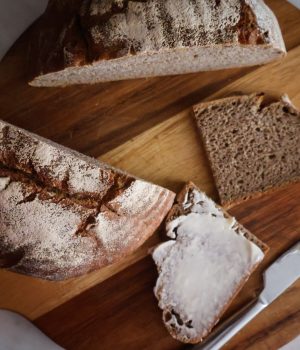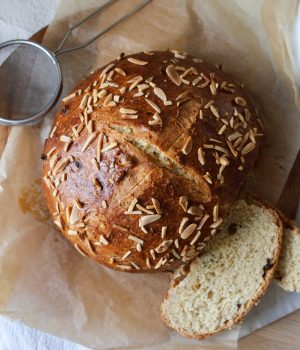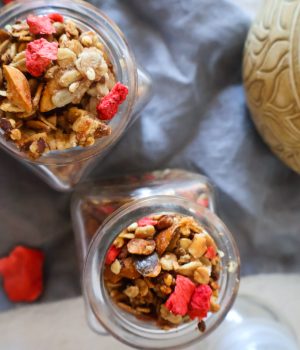Sunflower seed sourdough bread
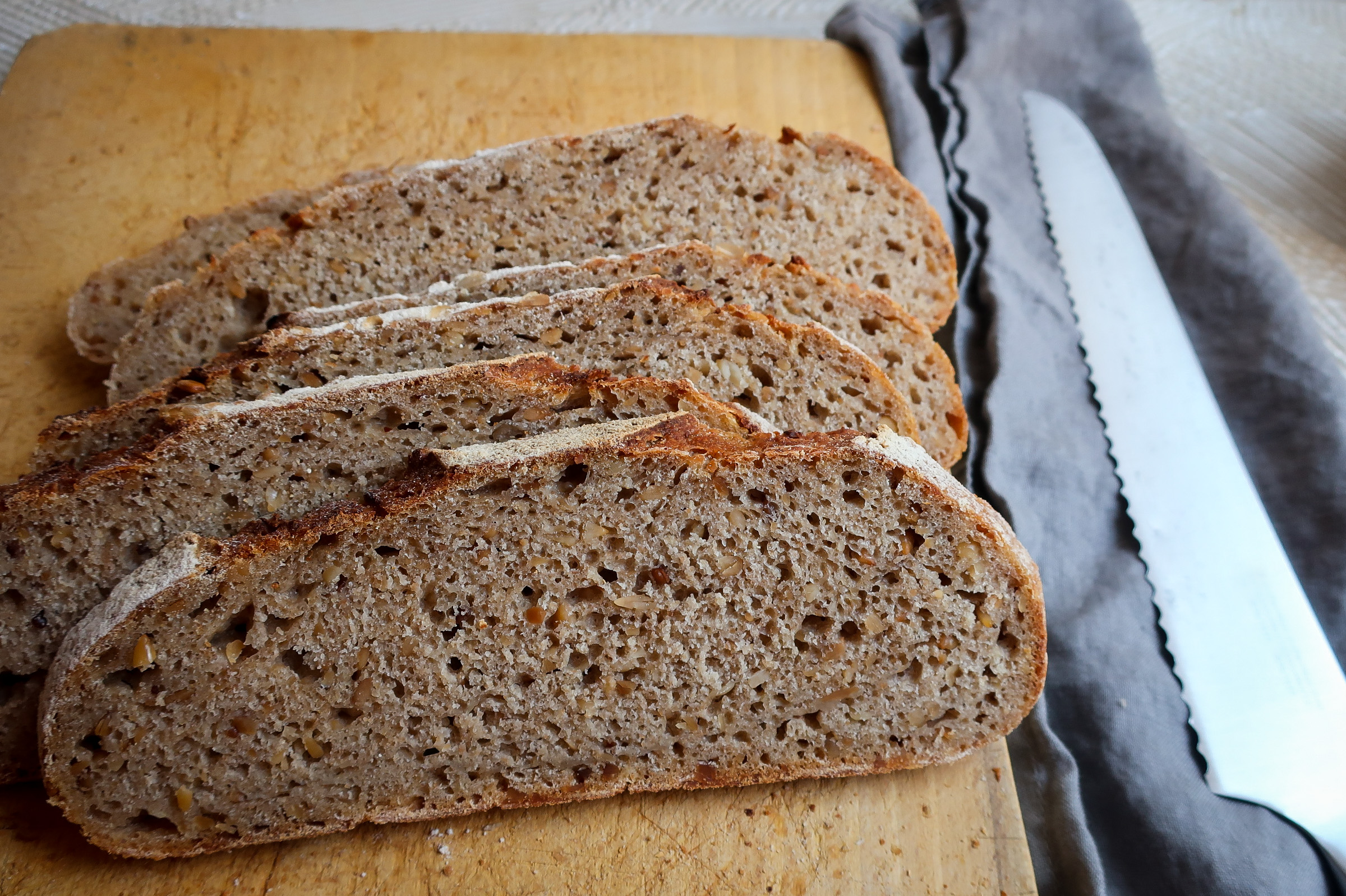
This hearty bread tastes nutty thanks to the generous amount of sunflower seeds, and it's also wonderfully filling!
I have big seed lovers at home and they would eat anything with it. Sunflower seeds? Pumpkin seeds? or nuts? My boys love them all, so in our house we put these goodies in almost all of our breads. The seeds or nuts are crunchy in the bread, they're nicely golden, they make the bread smell great, add softness and texture but this bread, it's a little different.
It really tastes like sunflower seeds all through!
I have a little favorite memory. Back in the days when I never dreamed that I would one day bake my own sourdough bread, I tried all kinds of bread mixes and breads leavened with yeast or with soda. I once tried a gluten-free sunflower bread mix and although I can't say that the bread was very good or that it looked perfect, I was absolutely blown away by the taste. Not only was it made with sunflower seeds but it actually tasted like sunflower seeds! It was delicious!
And that memory always came back to me when I put any kind of seeds in my bread and I thought, how is it that my bread with sunflower seeds just tastes like bread with sunflower seeds? So I searched and tried until I came up with this most sunflower seed sourdough bread that I'm really proud of! And mostly for the fact that my taste in memory is overcome!
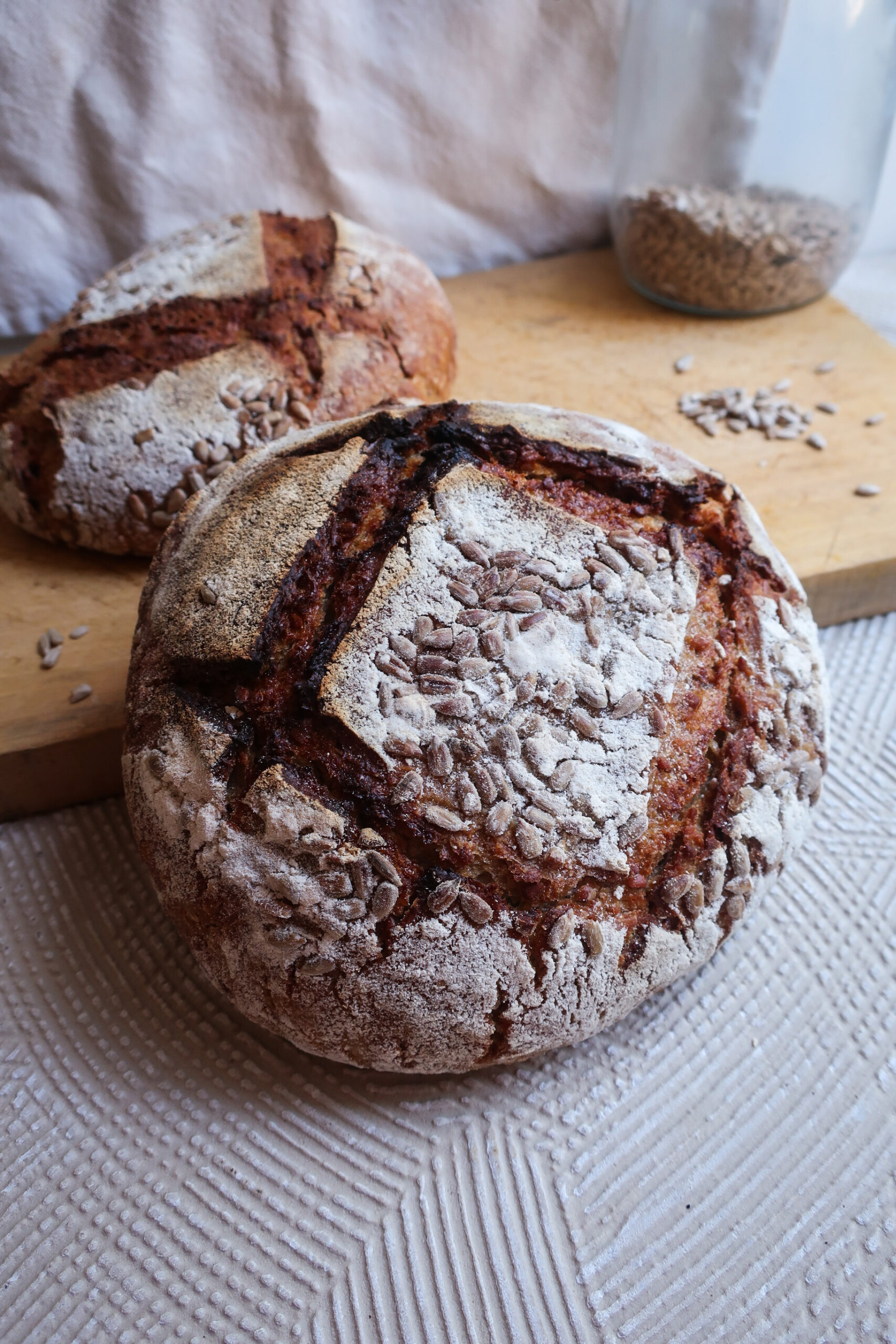
How to add sunflower seeds to sourdough bread?
You don't get that perfect flavor from sunflower seeds just by tossing the seeds into the dough. NO, no and no! You have to do it in a little more elaborate way, or rather in this way of 3 simple steps:
- The right amount of seeds: When I bake my sourdough breads I usually add a few handfuls of seeds to the dough, but this time I add a much larger amount of seeds to the dough. In this case, the more sunflower seeds, the more sunflower seed flavor!
- Roasting: Sunflower seeds are very tasty on their own. However, dry roasting them in a pan or oven will enhance their flavor. The seeds develop a beautiful fragrance, the oil is released and they get a beautiful golden color that stands out in the bread.
- Grinding: In order to develop the flavor of the sunflower seeds even more, it is enough to roughly grind the seeds. This way you get the best out of the seeds and you get a beautiful texture in the bread. You will have some seeds whole, some coarsely ground and some finely ground like flour. As a result, the sunflower seed flavor is spread throughout the bread!
Are sunflower seeds healthy?
Besides the fact that sunflower seeds taste great and are thus suitable for healthy crunching or snacking, they are also very beneficial for our health.
The seeds contain a lot of health benefits like vitamin E, magnesium, protein and fatty acids , which makes them beneficial for lowering blood pressure, cholesterol and blood sugar. They also have anti-inflammatory effects and have calming effects so they are helpful against stress.
The nutrients contained in the seeds are better absorbed if the seeds are soaked in water, ideally with a drop of vinegar. This will reduce the phytic acid and make the seeds more easily absorbed for our bodies. However, soaking will soften the seeds, which is why I do not soak them in this recipe. If you want to soak the seeds and still use them, you can drain them after soaking, dry them and roast them in a single layer on a baking sheet in the oven. They should be crisp again within twenty minutes.
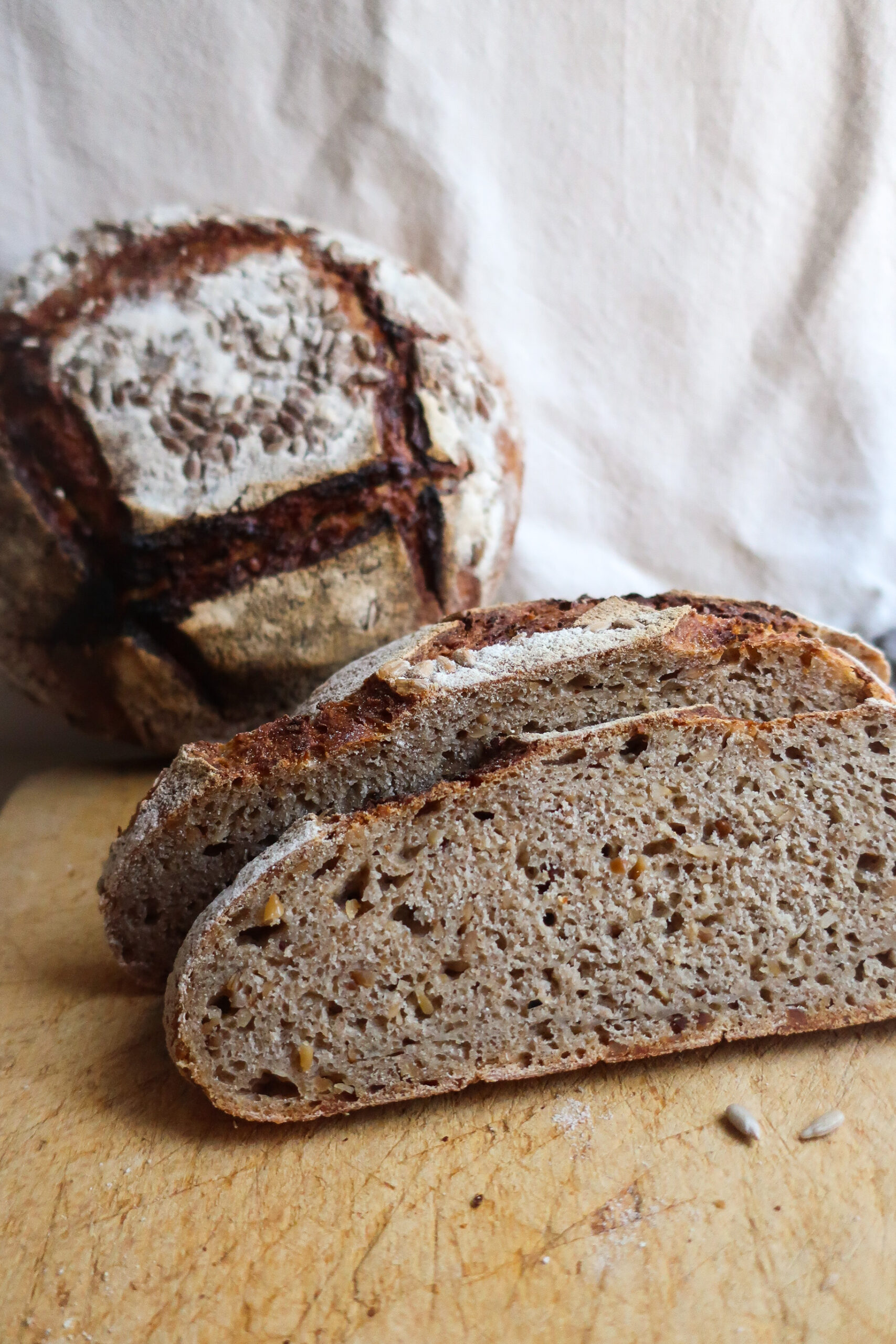
How to make baking sourdough bread easier:
Although I enjoy making sourdough bread, I'm not the person who wants to play with dough every day. That's why I like to use one simple trick. This trick is that I make two loaves of bread at once , and then put one loaf in the fridge to rise for the final proofing. Depending on how hydrated my dough is then the bread rises in the fridge for 2-4 days. I then just need to take the risen bread out of the fridge and bake it. And voila, I have freshly baked sourdough bread!
This method saves me time and cleanup in the kitchen and I use it whenever I bake similar type round breads!
How to make sunflower seed sourdough bread?
As always, we divide the preparation of the bread into two days.
First day in the evening make the levain. Mix the wholemeal rye flour, water and sourdough starter in a large bowl and mix into a thick dough. Cover the bowl with a bag and leave to ferment for approximately 8-12 hours until the morning.
The next morning the levain should be nicely bubbled and we can mix the dough. This time we start by roasting the sunflower seeds. Place the seeds in a large pan and toast over a medium heat, stirring occasionally, until golden. The seeds are toasted the moment they scent your whole apartment. Then transfer them to a wide bowl and let them cool slightly.
Never leave the seeds on the pan after toasting. This is because the pan is still hot and could burn the seeds.
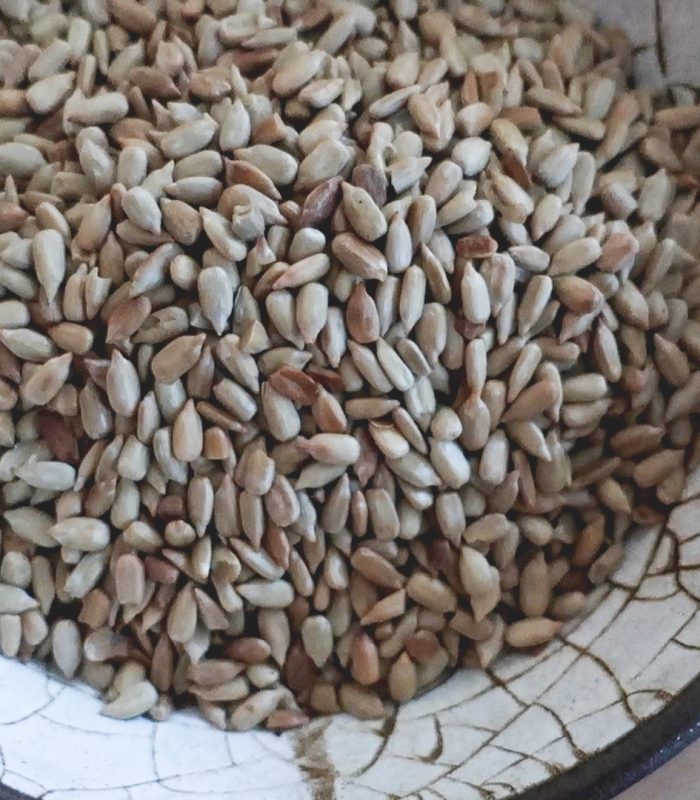
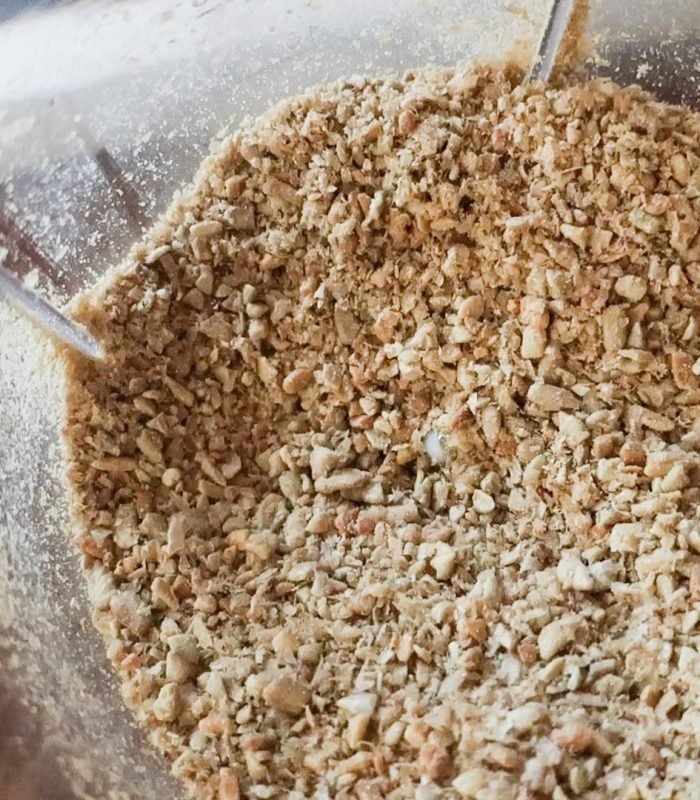
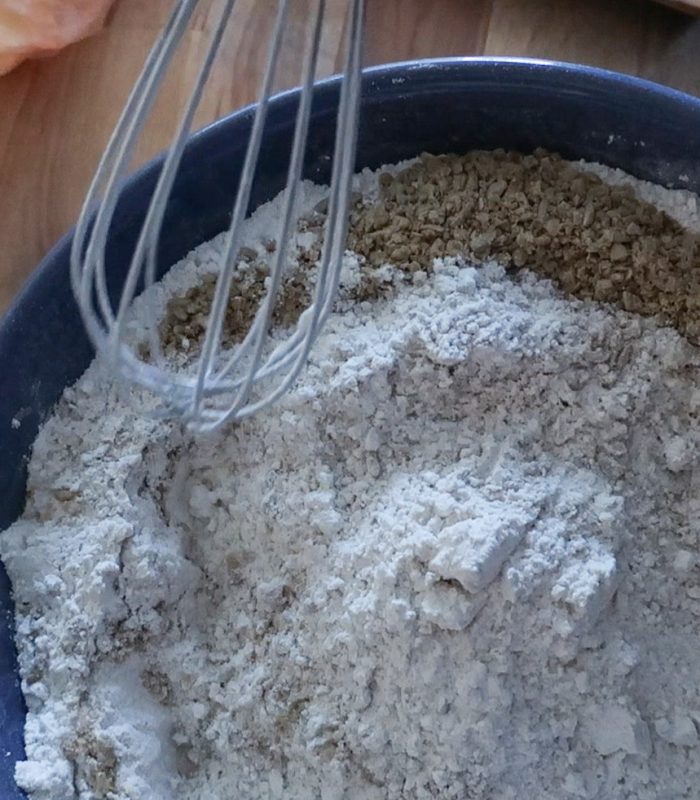
In another large bowl, combine all the dry ingredients - rye bread flour, wheat bread flour, plain spelt or wheat flour, salt and stir. When the seeds are a bit cool, pour them into the processor and grind coarsely with a few pulses. Ideally you should have some seeds whole, most crushed and some finely ground into flour. Add the ground seeds to the bowl with the flours and mix with a whisk.
When I bake just one loaf of bread, I don't mind mixing everything in the bowl at once because I have the strength to mix the dough properly. However, when I'm making dough for multiple loaves, it can be difficult to mix the dough properly, so I follow this technique:
Measure the amount of water you need into a small pan or measuring cup. Add one-third of the water to the starter and mix with a whisk. Add some of the flour and mix with a wooden spoon to form a thin dough, almost like batter consistency. Then add another third of the water and some of the flour and stir. Finally add the rest of the water and gradually the rest of the flour and work with a wooden spoon or your hands until you have a dough without dry spots or large lumps. This will ensure that the levain is well distributed between the rest of the flour and the bread rises evenly.
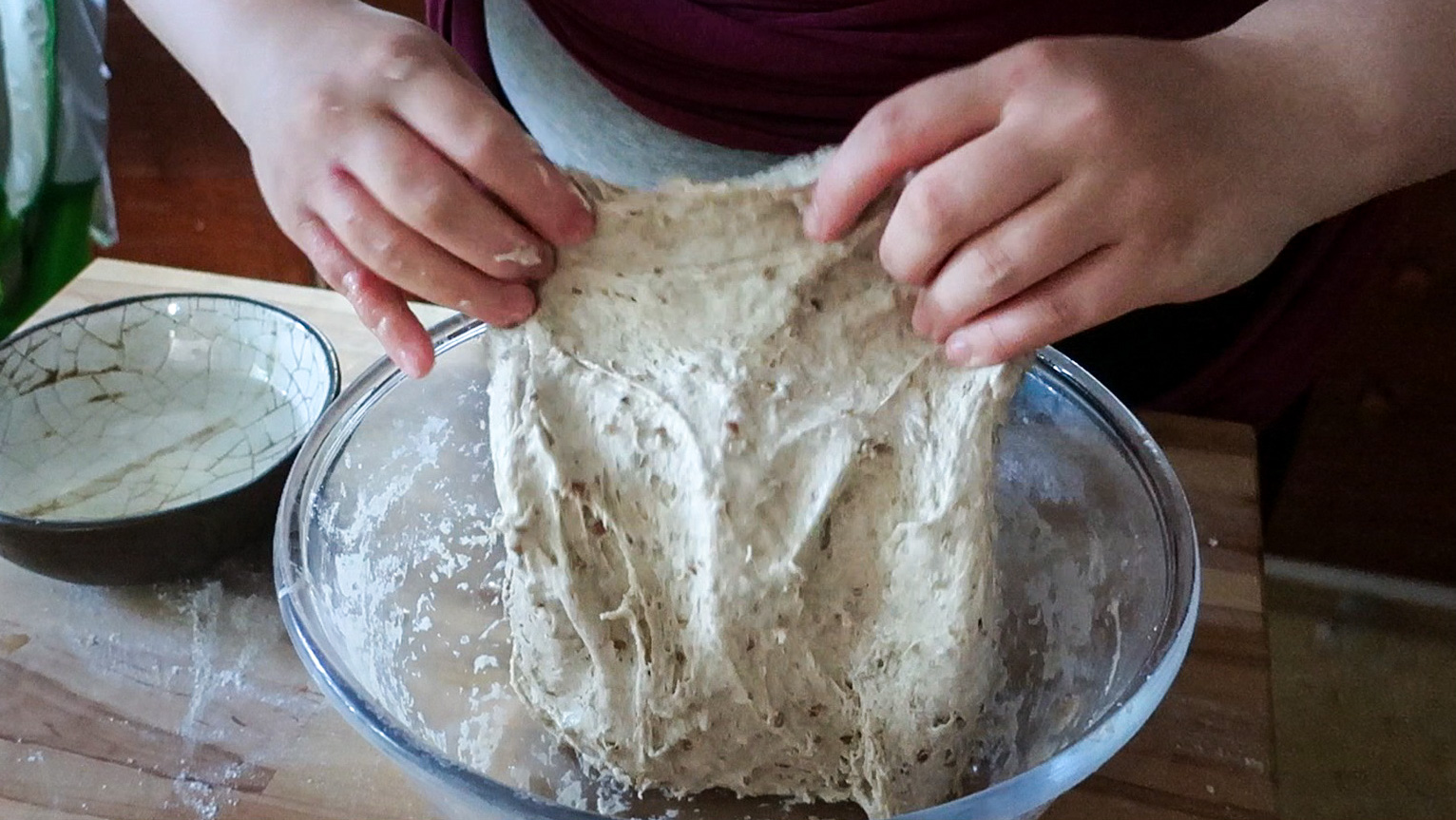
Cover the bowl with the dough and leave to rise for approximately 3 hours . During this time you can fold the dough several times, I recommend at least once.
Prepare a banneton baskets or bowl lined with a cloth and flour it thoroughly to prevent the dough from sticking. I also like to add a handful of sunflower seeds, which then crisp up nicely on the crust after baking.
After the first rise, transfer the dough to a lightly floured work surface and divide into two equal parts. Fold the dough slowly into the center to form a ball then add into prepared banneton baskets or bowls. Leave to rise for a second time. It usually takes 2-3 hours depending on temperature and humidity. Sometimes, however, it may take up to six hours.
You can also add the dough to rise to the fridge covered with a bag to prevent it from drying out. The time that it takes to rise in the fridge can also vary, but usually takes 2-4 days.
Bake in the oven in a preheated pot at 230°C for 15-20 minutes with a lid and at 210°C for a further 15-20 minutes without a lid. After baking, turn the bread out and let cool completely before slicing.
You can learn how to fold, roll the dough into a loaf and how to bake bread in a pot in my article on wheat-rye bread baked in a pot, where I cover this technical aspect of bread baking in detail.
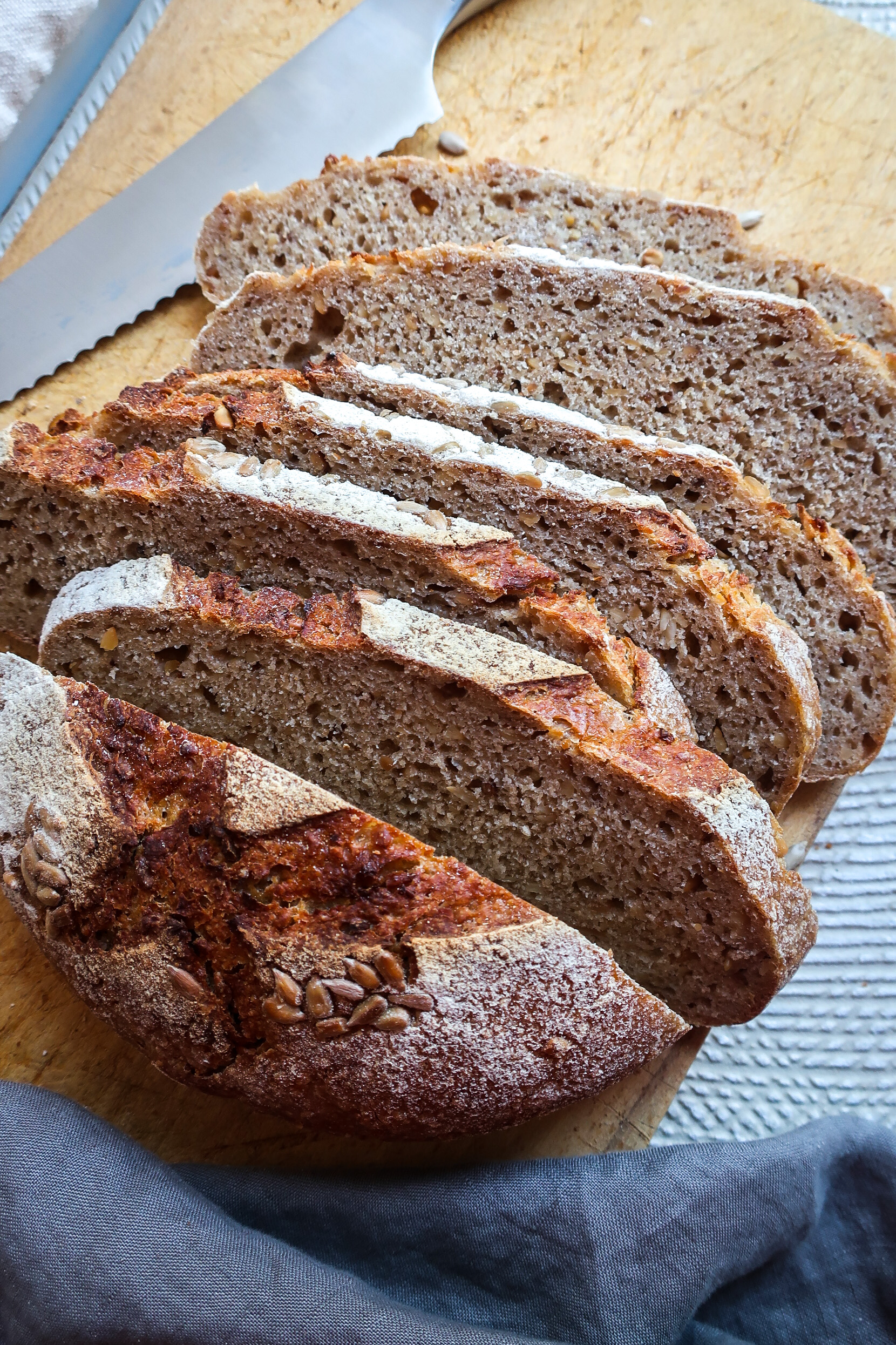
How to plan the baking of wheat sourdough bread?
- First day in the evening: 20:00 mix the levain and let ferment overnight in a warm spot
- The next morning: 7:00 make the dough
- first rise: 7:30-11:00 - I do at least 1 set of folding during rising
- second rise: 11:00, shape the dough and let it rise in a bowl with flour towel or flour banneton
- around 14:00 : preheat the oven and a pot with a lid to 230°C
- around 14:30 : the dough is risen so transfer it to a heated pot, put it in the oven to bake for 15 minutes
- 14:45: remove the lid and bake it for another 15-20 minutes at 210°C
- 15:00 the bread is baked so remove it from the pot and put it on a cooling rack
- around 16:00 : the bread is cool enough to slice and eat
Video instructions:
TIPS:
- you can also bake the bread on a baking tray - just preheat it in the oven and, along with putting the bread on the tray, you can spray the oven walls with water to create steam
- some part of the sunflower seeds can also be substituted with pumpkin seeds, sesame seeds or nuts
- if you want to use other seeds or nuts, I recommend roasting them separately in a pan or not roasting them at all
- it is also a wonderfull to score the bread decoratively with a sharp knife before baking
Recipe
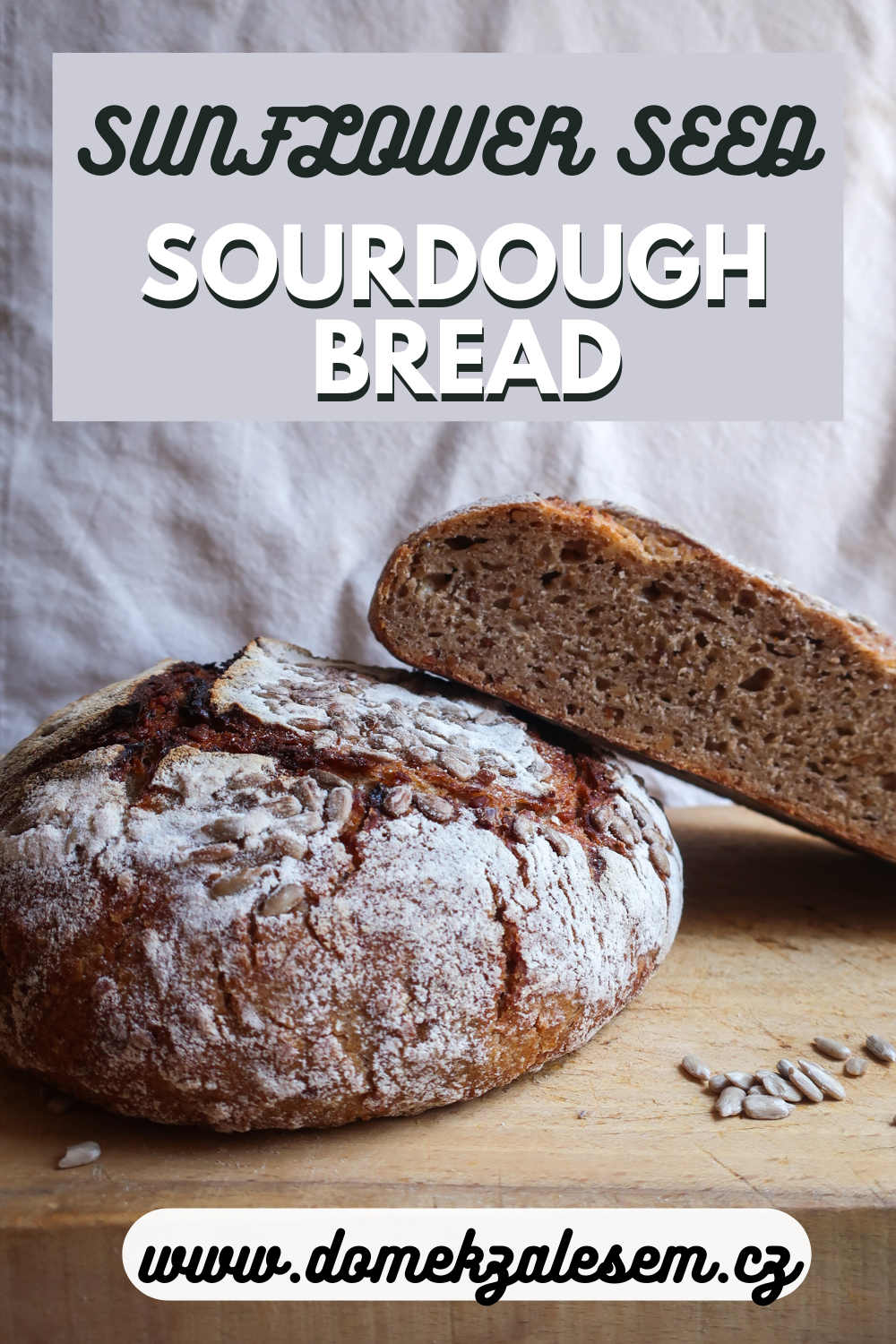
Recipe for 2 loaves
Sunflower seed sourdough bread
Ingredients:
for levain:
- 150 g wholemeal rye flour
- 150 g water
- 2 tbsp (50 g) sourdough starter
for dough:
- a levain
- 400 g wheat bread flour
- 200 g spelt flour or all purpose flour
- 200 g rye bread flour
- 200 g sunflower seeds
- 20 g salt
- 500 ml water
Instructions:
We have to divide the bread making process into two days.
- First day in the evening make the levain. Mix the wholemeal rye flour, water and sourdough starter in a large bowl and mix into a thick dough. Cover the bowl with a bag and leave to ferment for approximately 8-12 hours until the morning.
- The next morning mix the dough . Place the seeds in a large pan and toast over a medium heat, stirring occasionally, until golden. Then transfer them to a wide bowl and let them cool slightly.
- In another large bowl, combine all the dry ingredients - rye bread flour, wheat bread flour, plain spelt or wheat flour, salt and stir.
- When the seeds are a bit cool, add them into the processor and grind coarsely with a few pulses.
- Add the ground seeds to the bowl with the flours and mix with a whisk.
- Measure the amount of water you need into a small pan or measuring cup. Add water and flour mixture gradually to levain. Mix well each time until you get a dough without dry spots.
- Cover the bowl with the dough and leave to rise for approximately 3 hours . During this time you can fold the dough several times, I recommend at least once.
- Prepare a banneton baskets or bowl lined with a cloth and flour it thoroughly to prevent the dough from sticking. I also like to add a handful of sunflower seeds.
- After the first rise, transfer the dough to a lightly floured work surface and divide into two equal parts. Fold the dough slowly into the center to form a ball then add into prepared banneton baskets or bowls. Leave to rise for a second time. It usually takes 2-3 hours.
- Bake in the oven in a preheated pot at 230°C for 15-20 minutes with a lid and at 210°C for a further 15-20 minutes without a lid. After baking, turn the bread out and let cool completely before slicing.
Note: You can also leave the bread to rise in the fridge covered with a bag to prevent it from drying out. The rising time in the fridge can also vary, but usually takes 2-4 days.

